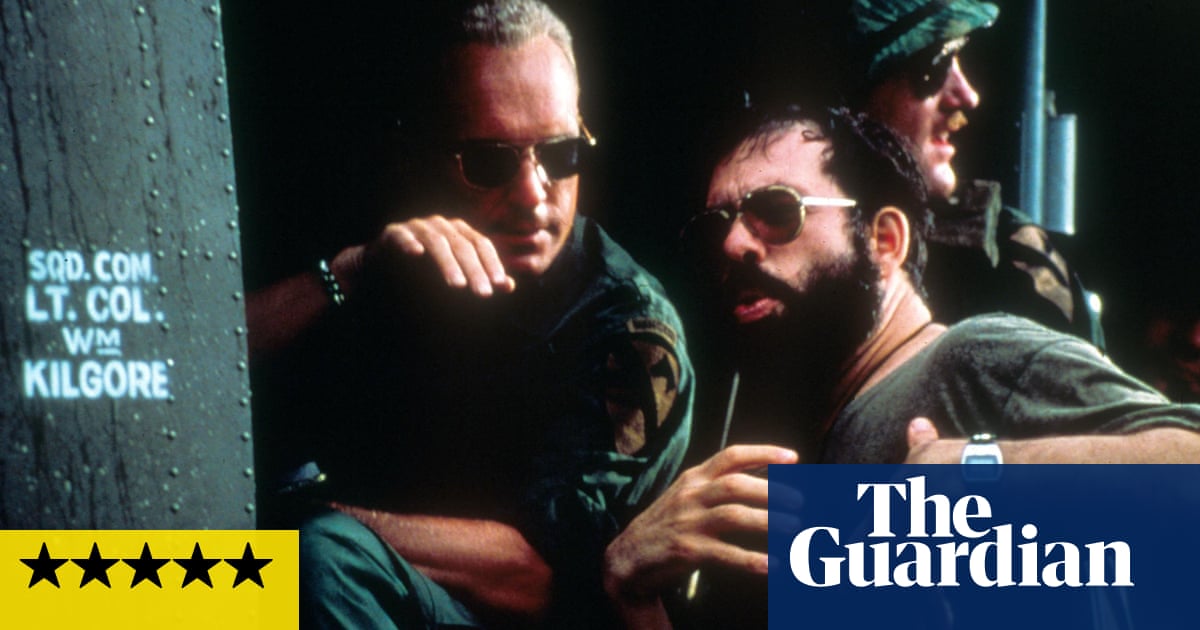The greatest ever making-of documentary is now on re-release: the terrifying story of how Francis Ford Coppola’s Vietnam war masterpiece Apocalypse Now got made – even scarier thanLes Blank’s Burden of Dreams, about the making of Werner Herzog’s Fitzcarraldo. The time has come to acknowledge Eleanor Coppola’s magnificent achievement here as first among equals of the credited directors in shooting the original location footage (later interspersed with interviews by Fax Bahr and George Hickenlooper), getting the stunningly intimate audio tapes of her husband Francis’s meltdown moments and, of course, in unassumingly keeping the family together while it was all going on.
With his personal and financial capital very high after The Conversation and the Godfather films, Coppola put up his own money and mortgaged property to make this stunningly audacious and toweringly mad version of Joseph Conrad’s novella Heart of Darkness from a script by John Milius; it is transplanted from 19th-century Belgian Congo where a rogue ivory trader has gone native in the dark interior, to south-east Asia during the Vietnam war where a brilliant US army officer is now reportedly being worshipped as a god among the Indigenous peoples and must have his command terminated “with extreme prejudice”.Marlon Brandohad a whispery voiced cameo as the reclusive demi-deity, Martin Sheen was the troubled Captain Willard tasked with taking Kurtz down and Robert Duvall is the psychotically gung-ho Lt Col Kilgore, who leads a helicopter assault.
Haemorrhaging money and going insanely over-schedule, Coppola shot his film in thePhilippinesduring burning heat, humidity and monsoons and borrowed army helicopters and pilots from President Ferdinand Marcos, only to find that on many occasions – especially during the legendary Ride of the Valkyries attack scene – filming had to halt as the Filipino military would ask for their helicopters back so they could suppress a communist insurgency. In fact, Coppola found himself reproducing reality on a 1:1 scale. As he said in his Cannes press conference, which opens the documentary: “The film is not about Vietnam; it is Vietnam, it’s what it was really like.” Well, bravura auteur rhetoric is an accepted Cannes press conference tradition. The film was arguably just what Vietnam was like for the Americans – though nobody actually died and perhaps it is time to re-state something about Vietnam that gets lost for later generations: a considerable proportion of US soldiers were drafted.
The agony was there from the beginning. Coppola originally cast Harvey Keitel as Willard but didn’t like what he was doing and fired him on pretty much the first day – a traumatic and legally fraught event that can’t be talked about too clearly in the documentary. Sheen, the replacement, was a heavy drinker and smoker whose “breakdown” scene in his seedy Saigon hotel room was a dangerous, booze-fuelled improvisation. It was a personal primal scream, which contributed so much to his stress that he had a near-fatal heart attack, almost scuppering the entire production. The documentary’s most gripping moment is Coppola yelling at someone on the phone not to talk about Sheen’s heart attack in case the resulting gossip causes his financial backers to lose their nerve. Sam Bottoms, playing one of Willard’s crew, talks cheerfully about doing speed and LSD during filming; he can’t have been the only one.
And all the time Coppola was suppressing intense anxiety that he was making a mediocre, pretentious movie. Like Conrad, he wanted to satirise the hubris and grotesque vanity of the west’s imperial ambitions – and there is something else as well. Willard comes to understand that in killing Kurtz, he is not interrupting or thwarting his occult ritual; he is in fact participating in it, and completing it. Perhaps Coppola came to believe something similar, that he was having his own epiphany-slash-nervous-breakdown in the jungle. It wasn’t quite an apocalypse for him, although he arguably never made anything as good again. As it is, it might have been good to have had Coppola and Milius discuss that title: it sounds like a demand, coming from someone who won’t wait for apocalypse a moment longer. It might be prescriptive and absurd, but as with the film itself, you wind up believing in it.
Hearts of Darkness: A Film-Maker’s Apocalypse is in UK and Irish cinemas from 4 July, and on UHD and Blu-ray from 28 July.
